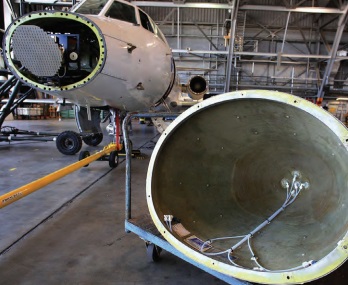Chapter: Low-Carbon Propulsion Technology, new invention technology, Research project papers,
Alternative Fuels' Effects on Contrails and Cruise Emissions (ACCESS) Flight Experiment

Alternative Fuels'
Effects on Contrails and Cruise Emissions (ACCESS) Flight
Experiment
Armstrong's flight
expertise and airspace are being leveraged to support a series of tests that
will study the effects of alternate biofuel on engine performance, emissions,
and aircraft-generated contrails at altitude. Sponsored by NASA's Langley
Research Center, the ACCESS-II flight experiment involves flying a DC-8
aircraft as high as 38,000 feet while three instrumented aircraft-a Langley
HU-25C Guardian, a Falcon from the German Aerospace Center (DLR), and a
T-33 from the National Research Council of Canada (NRC)-trail
behind at distances ranging from 300 feet to more than 10 miles and measure
exhaust fumes from the DC-8 engines. During the flights, the DC-8 engines will
be powered by conventional fuel and a blend of two other mixes of conventional fuel
and an alternative biofuel. More than a dozen instruments will characterize the
soot and gases collected from the DC-8, monitor the way exhaust plumes change
in composition as
they mix with air, and
investigate the role emissions play in contrail formation.
Work to date: A pair of ground-based studies in 2009 and
2011 measured a DC-8's exhaust emissions as the aircraft burned
alternative fuels. Flight experiments in 2013 occurred with the sampling HU-25C
Guardian aircraft flying behind the DC-8.
Looking ahead: Data collection and
analysis will be conducted by Langley, and Armstrong will provide
the lead aircraft, pilots, and
airspace.
Representatives from Canada and Germany will participate in the experiments, as
those countries also are interested in wake vortex and emissions research.
Partners: Langley, NRC, and DLR
Benefits
Aids research: Will enable
the collection of real-time data about engine fumes
to better understand the chemistry of combustion byproducts and
aid in the evaluation of alternative jet fuels
Reduces pollution: Will contribute to
the design of cleaner jet engines
Applications
Alternative fuel research
Wake vortex flight research and
industrial processes
Related Topics